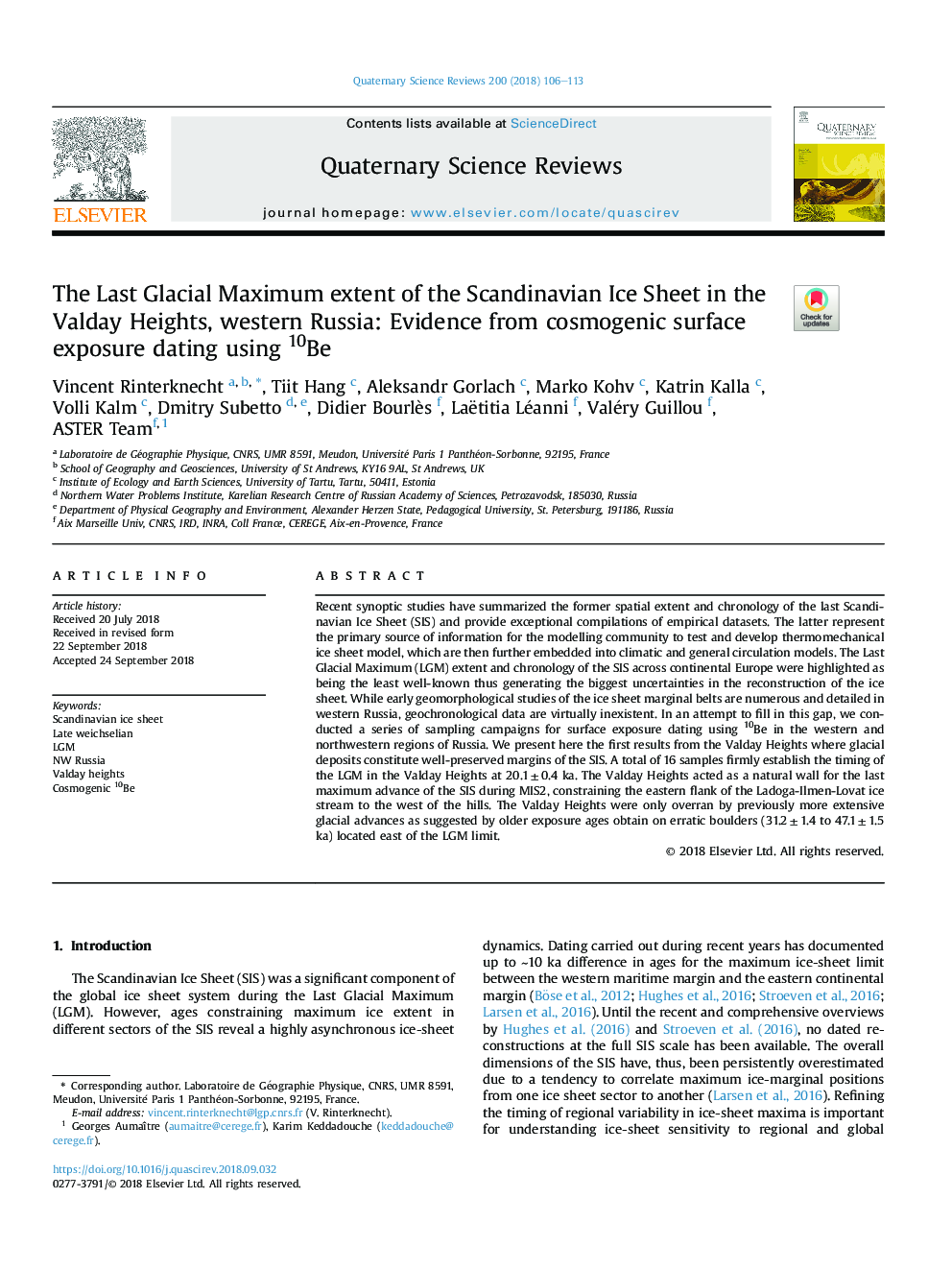| Article ID | Journal | Published Year | Pages | File Type |
|---|---|---|---|---|
| 11010075 | Quaternary Science Reviews | 2018 | 8 Pages |
Abstract
Recent synoptic studies have summarized the former spatial extent and chronology of the last Scandinavian Ice Sheet (SIS) and provide exceptional compilations of empirical datasets. The latter represent the primary source of information for the modelling community to test and develop thermomechanical ice sheet model, which are then further embedded into climatic and general circulation models. The Last Glacial Maximum (LGM) extent and chronology of the SIS across continental Europe were highlighted as being the least well-known thus generating the biggest uncertainties in the reconstruction of the ice sheet. While early geomorphological studies of the ice sheet marginal belts are numerous and detailed in western Russia, geochronological data are virtually inexistent. In an attempt to fill in this gap, we conducted a series of sampling campaigns for surface exposure dating using 10Be in the western and northwestern regions of Russia. We present here the first results from the Valday Heights where glacial deposits constitute well-preserved margins of the SIS. A total of 16 samples firmly establish the timing of the LGM in the Valday Heights at 20.1â¯Â±â¯0.4 ka. The Valday Heights acted as a natural wall for the last maximum advance of the SIS during MIS2, constraining the eastern flank of the Ladoga-Ilmen-Lovat ice stream to the west of the hills. The Valday Heights were only overran by previously more extensive glacial advances as suggested by older exposure ages obtain on erratic boulders (31.2â¯Â±â¯1.4 to 47.1â¯Â±â¯1.5 ka) located east of the LGM limit.
Related Topics
Physical Sciences and Engineering
Earth and Planetary Sciences
Geology
Authors
Vincent Rinterknecht, Tiit Hang, Aleksandr Gorlach, Marko Kohv, Katrin Kalla, Volli Kalm, Dmitry Subetto, Didier Bourlès, Laëtitia Léanni, Valéry Guillou, ASTER Team ASTER Team,
